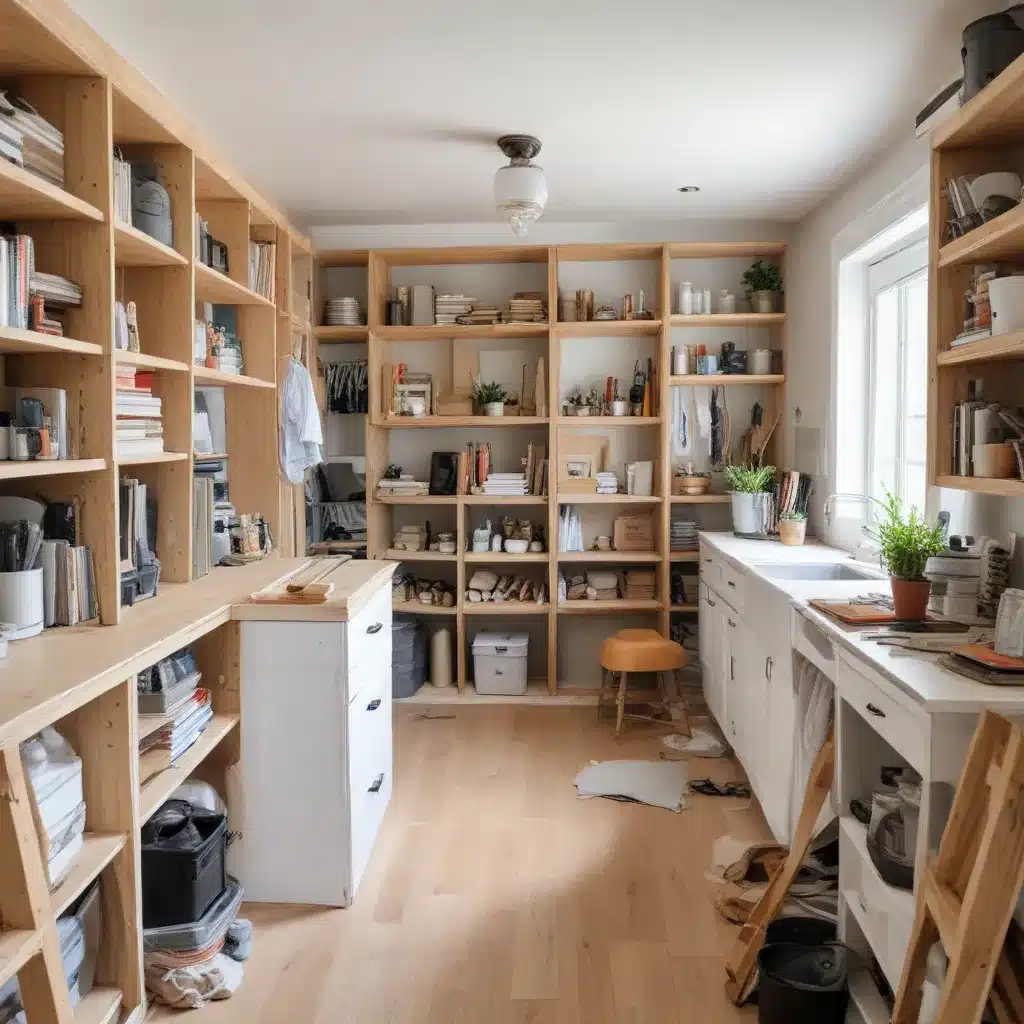Decluttering and Organizing: Maximizing Space Through Renovation
As an experienced home improvement consultant, I’ve had the privilege of helping countless clients transform their living spaces through thoughtful decluttering, strategic organization, and renovation strategies. Whether you’re dealing with a cramped kitchen, a cluttered garage, or an underutilized basement, the key to unlocking your home’s full potential lies in maximizing the available space.
In this comprehensive guide for Reluctant Renovator, I’ll share a wealth of practical insights and proven techniques to help you declutter, organize, and renovate your way to a more functional, visually appealing, and family-friendly living environment. Get ready to say goodbye to the clutter and hello to a beautifully streamlined and eco-friendly home.
Home Organization Strategies
Effective home organization starts with a critical evaluation of your current possessions and a commitment to minimalism. By decluttering and purging items you no longer need or use, you can create a solid foundation for a more organized and visually appealing space.
Decluttering Techniques
Begin by gathering all the items in a particular room or area and sorting them into categories: keep, donate, sell, or discard. This process not only helps you identify what’s essential but also allows you to let go of the unnecessary with ease. Consider enlisting the help of a friend or family member to provide a fresh perspective and keep you motivated throughout the decluttering journey.
Once you’ve cleared the clutter, it’s time to explore storage solutions that maximize your available space. Invest in adjustable shelving units, wall-mounted storage, and clear storage bins with labels to ensure everything has a designated home. Incorporate multi-functional furniture, such as benches with built-in storage, to further streamline your space.
Minimalist Lifestyle
Embracing a minimalist lifestyle can be a game-changer when it comes to maintaining a clutter-free and organized home. Adopt the mindset of “less is more” and be intentional about the items you bring into your living space. Before making a purchase, ask yourself if the item truly serves a purpose or brings joy to your life. This mindset shift will not only simplify your home but also your daily routines, reducing the time and energy needed for maintenance.
Renovation Planning
Tackling a renovation project can be an exciting yet daunting task. By carefully planning your approach and considering the architectural and design aspects, you can ensure a successful and stress-free transformation.
Architectural Considerations
When planning a renovation, pay close attention to the structural elements of your home. Assess the load-bearing walls, ceiling heights, and floor plans to determine the feasibility of your desired changes. Consult with a professional architect or structural engineer to identify any potential challenges and explore innovative solutions that maximize your available space.
Design Principles
Adopt a minimalist design approach that emphasizes clean lines, multipurpose furniture, and strategic storage solutions. Incorporate open floor plans and vertical storage to create a sense of airiness and visual cohesion throughout your home. Consider the flow of foot traffic and the functionality of each space to ensure a seamless and user-friendly layout.
Project Management
Effective project management is key to a successful renovation. Develop a detailed timeline, budget, and scope of work to ensure your project stays on track. Communicate regularly with your contractors, designers, and vendors to address any issues or changes promptly. By staying organized and proactive, you can minimize disruptions and enjoy a stress-free renovation experience.
Space Optimization
Maximizing the available space in your home is a crucial aspect of any successful renovation. Embrace multifunctional design, vertical storage, and open floor plans to transform your living areas into highly efficient and visually appealing spaces.
Multifunctional Spaces
Incorporate multifunctional furniture and built-in storage solutions to create spaces that serve multiple purposes. For example, a murphy bed in a home office can transform the room into a guest bedroom when needed, while a kitchen island with hidden storage can provide both additional work surface and concealed storage.
Vertical Storage
Don’t underestimate the power of vertical space. Install wall-mounted shelves, pegboards, and overhead storage racks to keep frequently used items within reach while freeing up valuable floor space. Utilize tall cabinets and built-in bookcases to maximize the vertical dimensions of a room.
Open Floor Plans
Open floor plans can be a game-changer in creating a sense of spaciousness and flow within your home. By removing unnecessary walls and partitions, you can seamlessly connect living areas, such as the kitchen, dining room, and living room, to enhance the overall functionality and visual appeal of your space.
Sustainable Renovations
As environmentally conscious homeowners, it’s essential to prioritize eco-friendly solutions during your renovation journey. From energy-efficient upgrades to the selection of sustainable materials, there are numerous ways to create a greener and more resource-conscious living environment.
Energy-Efficient Upgrades
Consider investing in high-efficiency appliances, LED lighting, and improved insulation to reduce your home’s energy consumption and carbon footprint. Upgrade your HVAC system to a more energy-efficient model, and explore the possibility of incorporating renewable energy sources, such as solar panels, to power your home.
Eco-Friendly Materials
When selecting building materials and finishes, prioritize natural, low-VOC, and recyclable options. Bamboo, reclaimed wood, and cork are excellent sustainable alternatives to traditional materials. Opt for low-flow plumbing fixtures and non-toxic paints to create a healthier indoor environment.
Waste Reduction Practices
Incorporate waste reduction practices into your renovation plan by diverting as much construction waste as possible from landfills. Work with environmentally conscious contractors who prioritize recycling and repurposing materials. Explore opportunities to donate or sell gently used items that you no longer need.
By embracing these home organization strategies, renovation planning, space optimization, and sustainable practices, you can transform your living space into a functional, visually appealing, and eco-friendly haven. Remember, the journey to a decluttered and organized home is a continuous one, but with the right mindset and techniques, you can create the space of your dreams.
For more inspiration and practical tips, be sure to visit Reluctant Renovator – your one-stop-shop for all your home improvement needs.




